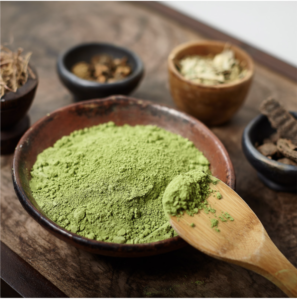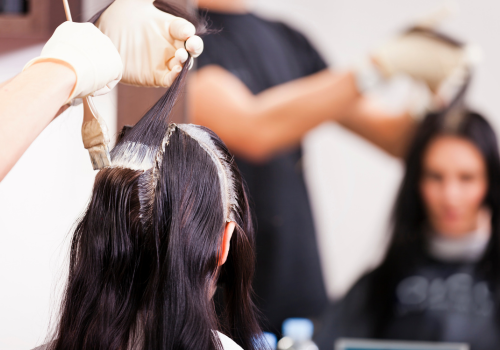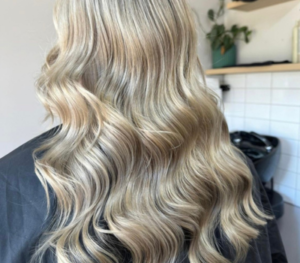Introduction
Coloring white hair naturally is a common concern for many people seeking to conceal the signs of aging or change their appearance.
While the chemicals found in traditional hair colorants can be effective, they can also cause long-term damage to hair and scalp health. That's why more and more people are turning to natural methods to color their white hair, offering a safer, environmentally-friendly alternative.
One of the most popular natural methods for coloring white hair is the use of herbal tinctures. These dyes are derived from plants rich in natural pigments that can color hair while providing additional health benefits. Plants such as henna, chamomile, black tea, coffee and beet juice are often used for this purpose. Henna, for example, can provide a reddish or coppery tint, while chamomile can lighten blond hair and add golden highlights. Not only are these methods gentle on the hair, they also offer a variety of shades and customizable results.
Understanding gray hair
A. White hair is the result of a natural aging process called canitis. This process occurs when hair follicles stop producing melanin, the pigment responsible for hair color. Melanin is produced by cells called melanocytes found in hair follicles. With age, these melanocytes become less active, leading to a reduction in melanin production. As a result, new hair growth is devoid of pigment and appears white, gray or silvery.
B. Several factors can accelerate the appearance of gray hair. Heredity plays a predominant role in the speed at which gray hair appears. If your parents or grandparents had early white hair, it's likely that you will too. Chronic stress is another factor that can contribute to premature canitis. Prolonged physical or emotional stress can disrupt melanocyte function and lead to reduced melanin production. In addition, medical conditions such as vitiligo, an autoimmune disease where immune cells attack melanocytes, can lead to premature white hair.
C. The science behind gray hair lies in the body's natural aging process and the regulation of melanin production. Melanin is produced in melanocytes located at the base of hair follicles. This production is controlled by several factors, including genes and hormones. With age, melanocytes become less active and produce less melanin. This leads to a progressive decrease in hair color and the appearance of white hair. Although this process is largely inevitable, research is underway to better understand the underlying molecular mechanisms and develop potential treatments to delay or reverse canitis.

Natural methods for coloring white hair
1. Henna is a method of hair coloring a traditional, natural coloring agent that has been widely used for centuries. It is derived from the leaves of the Lawsonia inermis plant and is known for its coloring properties, rich in natural pigments. Henna can be used to dye hair in shades ranging from red to brown, depending on the length of application and the ingredients added. As well as providing natural color, henna also strengthens hair, giving it shine and volume.
2. Herbal infusions are another popular method of darkening hair naturally. Herbs such as rosemary, sage, black tea and nutmeg can be used to prepare infusions rich in natural pigments. These infusions can be applied to the hair as a rinse after shampooing to help intensify its natural color and cover white hair over time. What's more, these infusions can also provide hair health benefits, such as stimulating growth and strengthening hair follicles.
3. Fruit and vegetable juices are another option for achieving natural highlights in hair. For example, carrot juice can add warm, golden highlights to blonde hair, while beet juice can give red or violet highlights. These juices can be blended with other natural ingredients, such as apple cider vinegar or coconut oil, to create nourishing hair masks that provide both a natural color and hair health benefits.
4. Visit hair masks are an effective way to cover white hair while nourishing and conditioning hair. Ingredients such as yoghurt, honey, avocado, egg yolk and olive oil can be blended to create nutrient-rich masks. These masks can be applied to the hair, left to work for a while, then rinsed out to reveal softer, shinier, more colorful hair.
Tips for maintaining naturally colored hair
- To preserve the color of naturally colored hair, it's essential to use hair care products specifically designed for colored hair. Opt for sulfate- and silicone-free shampoos and conditioners, as these gentle products won't strip color from hair and preserve shine. What's more, regular use of nourishing hair masks can help keep hair hydrated and extend color life.
- Protecting color-treated hair from external aggressors is crucial to maintaining vibrant color. Avoid exposure to the sun as much as possible, as UV rays can fade hair color. If you are exposed to the sun, wear a hat or use hair care products containing UV filters to protect your hair. Also, avoid excessive use of heat sources such as straightening irons or hair dryers, as heat can damage hair and alter its color.
- The frequency of touch-ups depends on how quickly your hair grows back and the color you wish to maintain. In general, we recommend touching up roots every 4 to 6 weeks to maintain even color. To prolong color life between touch-ups, use specific shampoos and conditioners for color-treated hair, and avoid frequent washing. In addition, rinse hair with cold water to seal cuticles and preserve color. By following these tips and adopting a proper hair care routine, you can prolong the life of your natural color while preserving the health of your hair.

Answers to frequently asked questions
Does natural hair color cover all white hair?
The ability of natural coloring methods to cover all white hair depends on a number of factors, including the hair's base color, texture and porosity. In many cases, natural colorations can offer effective coverage of white hair, but some white hair may resist coloring or retain a different shade. A strand test is recommended to assess the compatibility of natural coloring with your hair before full application.
How long does natural hair coloring last?
The duration of natural hair color varies according to various factors, including the coloring method used, the hair's base color, hair care, and external aggressors such as the sun and frequent washing. In general, natural hair color can last from a few weeks to a few months, depending on these factors. To prolong the life of color, we recommend using appropriate hair care products and avoiding excessive exposure to the elements, which can fade color.
Are there any risks of allergic reactions with natural methods?
Although natural hair coloring methods are generally considered safe, there is always a risk of allergic reactions, especially in people sensitive to the plants or natural ingredients used in these methods. A skin test is recommended before applying any new natural hair coloring method. In addition, if you have a history of skin allergies or sensitivities, it is advisable to consult a health professional before using natural hair coloring products.
Is it possible to switch from chemical to natural hair color?
Yes, it is possible to switch from chemical coloring to natural coloring, but it may require a transition period. Chemical colorations can leave chemical residues on the hair, which can affect the ability of natural methods to adhere to the hair. For best results, we recommend waiting for the chemical color to fade or having the hair bleached before applying natural color. A consultation with a professional hairdresser can also be helpful in determining the best approach for switching from chemical to natural hair color.





